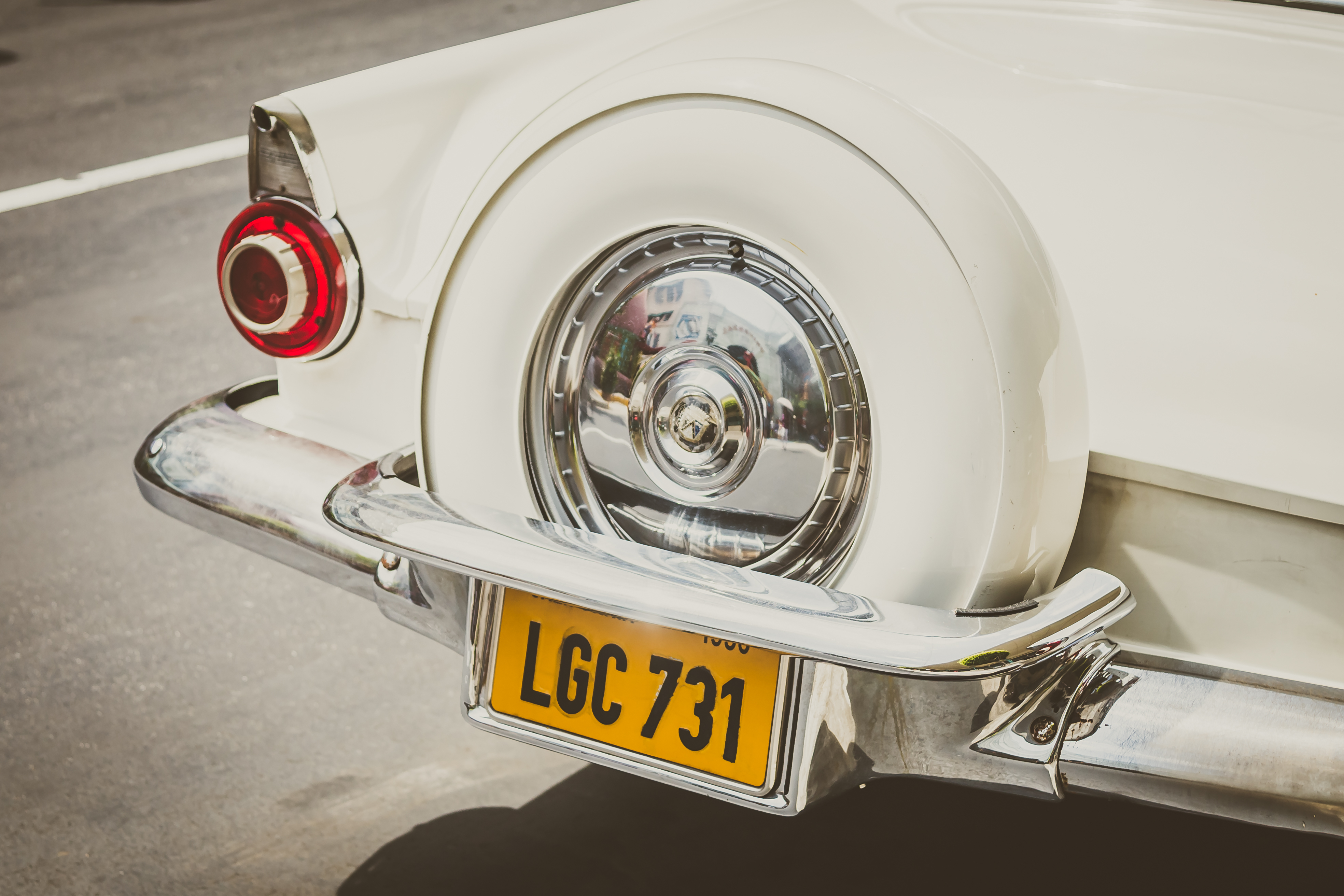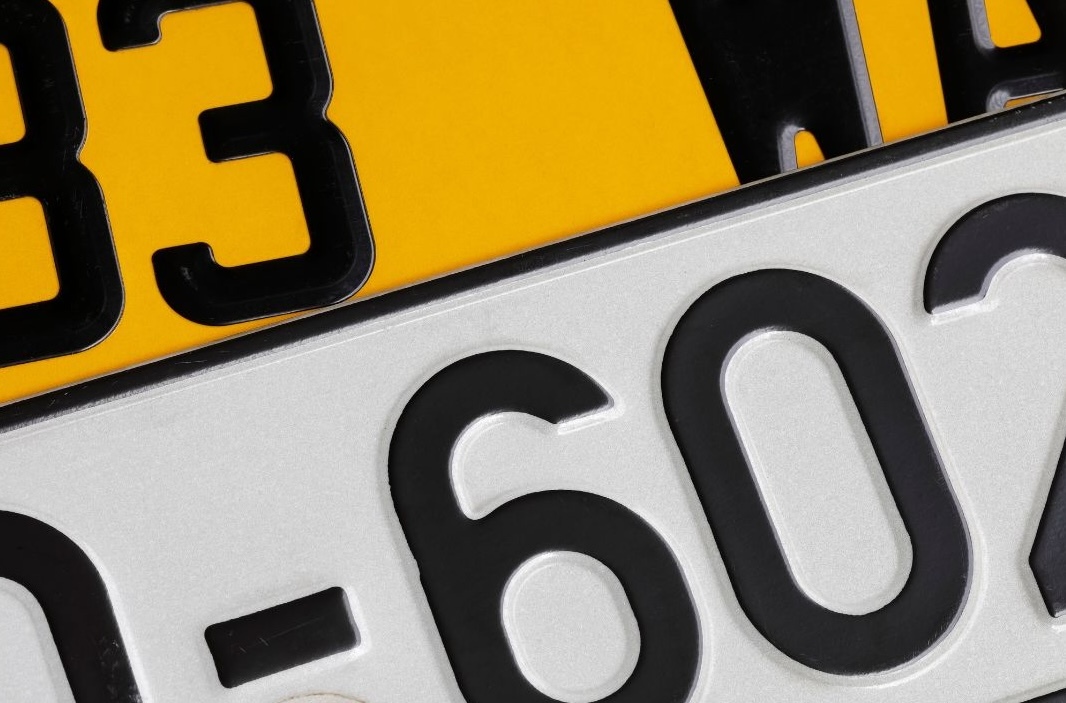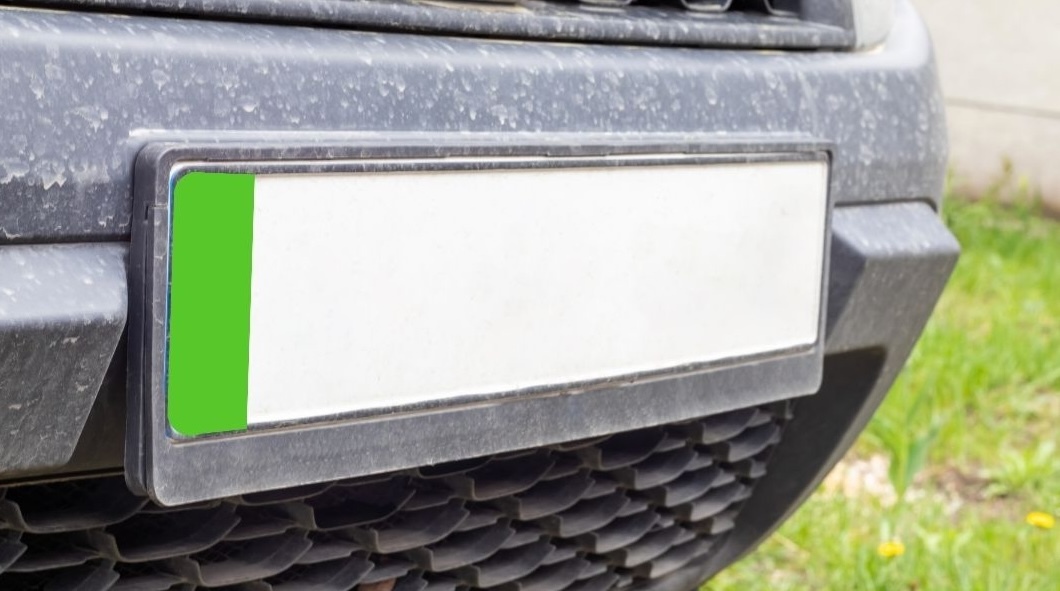Number plates aren't just random combinations of letters and numbers on a coloured background; they carry a specific meaning, and car owners must understand what they represent.
The UK has its own set of rules regarding the colour of number plates, each serving a unique purpose. From the classic white and yellow plates to the more specialised variants, understanding this coded language is crucial for any car owner.
This blog explains the various number plate colours and their significance on different vehicles.
What Colour Number Plates in the UK Are Legal?
Adhering to specific number plate colours isn't just a matter of aesthetics; it's a legal requirement. If you wonder, 'Are coloured number plates legal?', it depends on your vehicle and the regulations that accompany it.
The norm dictates black lettering displayed on a yellow or white background, a rule dating back decades. Straying from these regulations can lead to severe consequences. Not only does it risk a significant fine, but it also compromises road safety and can even result in your car failing its MOT test.
The law is in place to ensure clarity, making it easier to identify vehicles, which is crucial for both everyday driving and law enforcement purposes. So, it's not just about colours; it's about complying with the law and ensuring your vehicle is easily recognisable.
Why are Number Plates in the UK Different Colours?
There are various reasons for the different colours on number plates, some of which we will explore further in this blog.
As for the white and yellow plates, this helps to signify the direction in which a car travels. The white plate at the front and the yellow one at the rear allow drivers to determine whether they can see the front or back of other vehicles.
The current number plate colour code system was introduced in 1973; the yellow plates are easily identifiable in the dark when lit up by headlights, whereas white plates make them visible for oncoming traffic to read. These colour choices aren't random; they've evolved to optimise readability and identification.
Yellow Number Plates

Spotting a vehicle with yellow number plates signifies more than a distinctive colour choice. Yellow plates are for private hire vehicles, officially known as private hire vehicle (PHV) plates.
This deliberate colour coding serves a crucial purpose – enhancing passenger safety and confidence. The yellow plates make it easy for the public to identify licensed private hire vehicles, ensuring passengers can trust the vehicle they're getting into.
However, it's not just about the colour. The specific regulations governing yellow plates, including size, font, and format, are set by local authorities and licensing bodies. Private hire drivers must adhere to these rules to operate legally.
This front yellow plate is the difference between a standard car and a private hire vehicle. All cars have a yellow number plate at the rear of the vehicle, as previously mentioned. However, whereas the usual car has a white plate at the front, a private hire vehicle has two yellow plates instead to distinguish between the two vehicle types.
White Number Plates

The standard number plate in the UK is white, displaying black alphanumeric characters on a crisp white background. These plates are on cars, vans, and motorcycles registered after 1973. Their familiarity lies in their consistency: the prescribed size and font, adhering to UK regulations, make them instantly recognisable.
Positioned at the front of the vehicle with a yellow plate at the rear, these plates are engineered for visibility and legibility. Law enforcement and fellow road users rely on this clarity, ensuring easy identification.
Red and White Number Plates
The automotive industry uses white and red colour number plates featuring a white background with bold red lettering; they are commonly associated with trade plates used by motor trade professionals. These temporary identifiers are vital for individuals like car dealerships, manufacturers, and mechanics.
Trade plates play a crucial role, allowing professionals to conduct test drives, transport, or road test vehicles that are yet to be officially registered. This system offers a legal way to move vehicles on public roads during necessary business activities. However, it's imperative to follow stringent regulations; these plates should only be used by authorised individuals or entities engaged in the motor trade industry for approved purposes.
Number Plates with a Red Border
Number plates adorned with a red border serve a purely aesthetic purpose, adding a touch of personalisation and style to a vehicle. Unlike other coloured plates, the red border doesn't convey specific meaning or legal significance. Vehicle owners opt for this decorative choice to express individuality.
However, it's crucial to understand that while personalisation is accepted, there are guidelines. UK regulations allow coloured borders, but they must be non-reflective. This standard ensures that Automatic Number Plate Recognition (ANPR) systems and speed cameras can accurately read the registration details, upholding road safety and the efficiency of law enforcement efforts. So, while the red border might be a choice for personal flair, adhering to these non-reflective specifications is essential to maintain functionality and legality on the roads.
Number Plates with a Green Band

A vehicle displaying a green band or stripe on the left-hand side of its number plate signifies its electric power source. Introduced by the Transport Secretary in June 2020, this green band indicates that the vehicle is environmentally friendly and operates on electricity. Hydrogen-powered cars also have this band on their licence plates. This strategic policy change was implemented to encourage the widespread adoption of electric vehicles, pivotal in the UK's transition to eco-conscious transportation.
Beyond its regulatory significance, the green band acts as a visual cue to other road users, promoting awareness of electric vehicles. Highlighting these eco-friendly cars supports a cleaner, greener environment and fosters a collective understanding of sustainable transport. This simple yet impactful identifier contributes significantly to a more sustainable future on our roads.
Can the Wrong Coloured Number Plate Make You Fail an MOT?

The colour of your number plate is critical during an MOT inspection. If your car's UK number plate colours are non-standard or non-compliant, it can lead to an MOT failure.
Standard plates must have black characters on a white or yellow reflective background for the front and black characters on a yellow reflective background for the rear.
Furthermore, these plates must precisely match the official records registered with the DVLA. Any deviation from the legal requirements, including font style, size, or spacing, can also result in an MOT failure.
Can I Display a Black and Silver Number Plate?
If your car was registered before January 1st, 1973, you can legally display black and silver number plates in the UK. These distinctive plates are a feature of vintage and classic vehicles, preserving their authentic and nostalgic charm.
Beyond their legal significance, black and silver number plates hold substantial value in the collector's market. Enthusiasts and collectors often seek these speciality number plates, valuing them for their historical significance and rarity. Prices for such plates can start at £1 million and escalate based on their uniqueness.
Are Tinted Number Plates Legal?
For a number plate to be legal in the UK, it must meet the minimum requirement for visibility. As tinted plates impact light reflection and significantly lessen the visibility of the plate, they are illegal. The restriction is in place due to their impact on light reflection, as they significantly lessen the visibility of number plates. This reduced visibility can make it difficult for surveillance systems to read the plates accurately, posing potential safety risks.
The standards outlined in BSAU 145d strictly govern the legality of number plates in the UK. Tinted plates that fail to meet the minimum reflective value specified in this standard are considered illegal.
Whether achieved through tinted films or smoked acrylic, the fundamental requirement is clear: plates must meet reflectivity standards to comply with UK road regulations. Failure to adhere to these standards can lead to legal consequences and potential issues with traffic enforcement systems, including speed and ANPR cameras.
Understanding the significance of different number plate colours in the UK is vital for every car owner. It ensures compliance with regulations and contributes to road safety.
At Demon Plates, we recognise the importance of having legal and accurate plates for your car. Make a number plate with us today, ensuring your vehicle meets all road requirements while reflecting your style.
